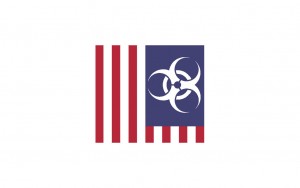The director of the Centers for Disease Control and Prevention (CDC) has admitted their strategy to combat Zika in Miami where infected mosquitoes have been found is not working. CDC Director Tom Drieden explained, “they’ve been applying both chemicals that kill larval mosquitoes and adult mosquitoes every day. It isn’t working as well as we had hoped.”

The CDC needs a new pesticide plan, and it already exists — with dichloro-diphenyl-trichloro-ethane (DDT), a gas banned by the Environmental Protection Agency (EPA) in 1972.
As a result of the CDC and the EPA’s shuffling to find a solution, Zika has infected over 5,000 Puerto Ricans living on the island and has moved into Florida. If Florida follows Puerto Rico’s trend, as many as 50 pregnant women could be infected each day — with the risk of devastating birth defects.
The CDC has now advised travel restriction on pregnant women, mosquito bite prevention, testing for pregnant women, waiting periods to attempt pregnancy, and dozens of other warnings in an area of Miami in an attempt to contain the spread. What was once a foreign problem is now a domestic health crisis.
However, with no actual working method to counter the mosquitoes the CDC has little hope for reviving the Florida community and preventing the disease from spreading through the mainland United States.
That is, without DDT.
DDT has already proven its effectiveness and cost efficiency. In 1947 application of DDT began, by the end of 1949 more than 4 million homes were sprayed and total eradication of malaria in the U.S. was declared. In the U.S., DDT had successfully stopped the mosquitoes before the EPA ever had the opportunity to ban it.
This has not just been an effective strategy in the United States. In 2006 the World Health Organization (WHO) studied the use of DDT in homes to end the spread of malaria and recommended struggling countries across the world use targeted indoor residual spraying of DDT to contain disease spread.

WHO found the only cases of resurgence of the disease after spraying resulted from resistance gained from previous excessive, unregulated use of DDT as a pesticide, however thus far “DDT is the only insecticide which is used exclusively for public health, and, therefore, unlike with other insecticides, resistance development to it is no longer influenced by other uses such as in agriculture.”
The fact is, DDT is probably the most effective answer to the spreading health devastation here and now with Zika. This action is not a choice of the CDC though. It is the EPA that maintains an absolute ban on domestic use of the spray, stifling the chances of disease control. What are we waiting for?
In 1972, Congress enacted the Federal Environmental Pesticide Control Act, a far-reaching amendment that gave the EPA vast discretion to ban certain pesticides. The executive ban by the EPA on DDT from use completely was instituted that very year because the gas, primarily sprayed over livestock as a pesticide, was found to cause defects in the development of animals exposed to the spray.
This unelected agency consistently prioritizes animal life over the welfare of American citizens, despite the findings from the WHO and clear need for a more effective mosquito spray from the CDC on the ground in Miami. The mosquitoes are not going to stop biting Americans and causing substantial birth defects in their children, but still the EPA cares more about animals potentially being hurt by DDT.
Researchers admit use of the pesticide can be done carefully and controlled, but environmentalists maintain the negative effects of DDT on the environment and possible effects on humans make it an unrealistic option. But the WHO organization accounted for “Concerns over the safety of DDT have been comprehensively addressed in the framework of the Stockholm Convention on Persistent Organic Pollutants (POPs)…. therefore, DDT can be used for [inside residual spraying] where it is indicated, provided that stringent measures are taken to avoid its misuse and leakage outside public health.”
For now, the EPA ban on DDT is being adhered to, but what will it take for it to be lifted? Perhaps when Zika reaches Washington, D.C. they’ll do something —like use the gas that has the absolute best chance of ending the spread of the virus. If this does not occur the EPA will not only be responsible for the nearly 600 mainland Americans and over 900 Americans in U.S. territories already infected, but the many more that this epidemic will eventually engulf.
Natalia Castro is a contributing editor at Americans for Limited Government.





